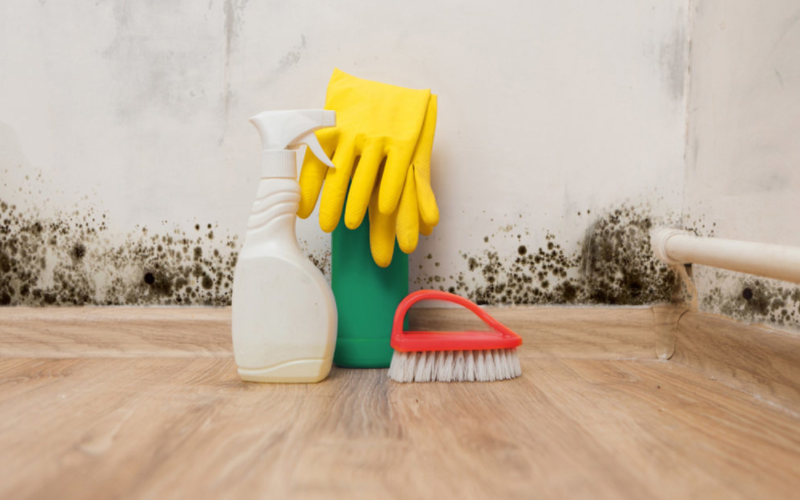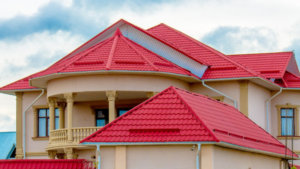You can land in the worst situation after a flood, as it completely halts your life and deprives you of your home comfort.
Your immediate priority is to put the house back to its tip-top shape, as it was prior to flooding. Once you start assessing the situation to repair your house, you come across several issues like plumbing, painting, and woodwork. While doing all these inspections, you may counter a strange, musty smell.
It indicates mold growth, which may have developed due to flood and dirty water ingress. You need to address this issue on a priority basis before other repairs. That’s when you should contact Richardson Mold Testing for professional remedies to clean your house from mold accumulation.
Here are some tips on how to prevent and clean mold after a flood.
Locating the Mold-Affected Areas
Mold starts growing at a rapid pace within 24 to 48 hours of water exposure. The micro-organisms, consisting of molds, are present in the air around us. Mold keeps growing as long as the moisture level remains high. In houses, you will find mold growth in wood and dry-walls. Once you identify the area, the rest of the process becomes easy to follow under a professional’s guidance.
Preventing Mold Growth after a Flood
It’s a multi-step effort to prevent mold growth.
- Dry the affected area as soon as possible.
- Open the entire premises if it’s less humid outside.
- Remove debris and all wet items in the area near the mold-affected place.
- Apply disinfectants and sanitizers in dry, exposed areas.
- Remove all absorbent materials like paper, tiles, false-ceiling, etc., and carpets as well.
- Use fans to circulate fresh air in the space.
- Use good dehumidifiers to reduce moisture contents in the air. It will evenly help dry things quickly.
For how long to run a dehumidifier after a Flood?
It can take anywhere from two days to many weeks to completely dry a flood-hit building or house. As plasters and insulation work alone, they will take a long time to dry. Hence, it’s better to replace them in full.
Until everything is dry, mold keeps accumulating. A humidity level less than 50% will reduce the risk for mold growth. A moisture meter will help you get correct readings.
What kills mold after a Flood?
Commercial mold and mildew removers can kill the mold in a post-flooding situation.
You can alternatively use washing soda and/or tri-sodium phosphate (5tb spoons for a gallon of water).
The third option to remove mold after a flood is to use a solution of water and bleach. The quantity should be about one-quarter of laundry bleach for each gallon of water.
You should always use the recommended quantity with great care, using precautions and personnel protective equipment.
Do Mold Inspections Help?
You should regularly get your premises tested for mold growth; that’s your first step for getting improved air quality.
Mold growth causes damage to your property; thus, reducing its resale value.
A timely call to check about mold growth can save you money. Nonetheless, better living and a conducive environment are essential.
Mold inspections are essential, not only to protect your property from damage but also for your own health benefits.
Why choose Richardson Water Damage Restoration
We, at Richardson Water Damage Restoration, immediately respond to water damage or post-flood situations. We offer a wide range of services and ensure to provide the best solution.
Faster Logistics
We are a fast, responsive unit for dealing with crucial situations like property damage due to water ingress or flooding. We cover over 1700 U.S. and Canadian franchise locations.
Specialist in Handling Water Damage
We know how to tackle any water damage situation. We offer advanced training sessions and keep our workers updated to combat these situations in a more organized way.
This is an effort to ensure to quickly dry water-damaged property in the shortest time.
Latest Equipment and Techniques
We invest in the latest tech and equipment to restore your home to its original or pre-flood shape. This helps us detect hidden moisture and suck out the stranded water in a resolute manner.
We are tech-savvy and take pride in using the latest equipment, machinery, and methods to clean, sanitize, and disinfect your property and clear water-affected areas.
Conclusion
Mold cleaning or its removal is not a DIY kind of procedure. Effective and conclusive removal of mold requires professionals, experts, and committed people to take the task using the right chemicals and PPEs to keep the premises clean.
An after-service cleaning of premises is a must prior to declaring the area clear from mold and bacteria.
Latest posts by Nirupama Verma (see all)
- What is Corporate Gifting and Why is It Important? - November 8, 2023
- Top 5 Benefits of Synthetic Liquids That You Did Not Know - December 24, 2022
- Pin up Review - September 23, 2022




